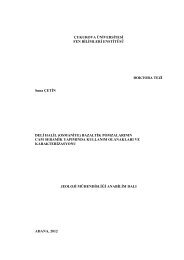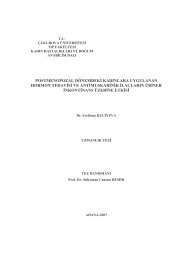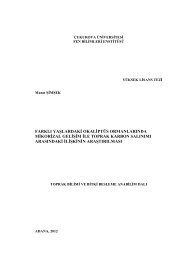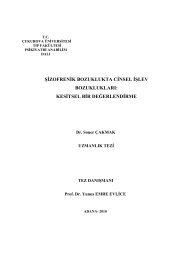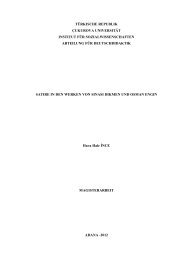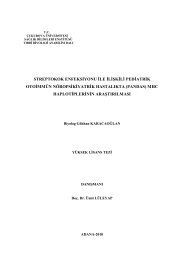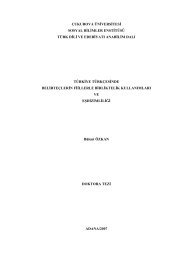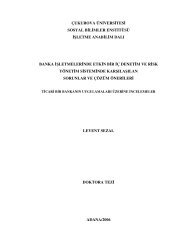ÇUKUROVA UNIVERSITY INSTITUTE OF NATURAL AND APPLIED ...
ÇUKUROVA UNIVERSITY INSTITUTE OF NATURAL AND APPLIED ...
ÇUKUROVA UNIVERSITY INSTITUTE OF NATURAL AND APPLIED ...
Create successful ePaper yourself
Turn your PDF publications into a flip-book with our unique Google optimized e-Paper software.
3. FUNDAMENTALS <strong>OF</strong> DVR Mustafa İNCİ<br />
For a practical DVR system, it can be shown that the nondominant real root<br />
3 2<br />
(pole) of the system characteristics equation a1 os<br />
+ a2os<br />
+ a3<br />
os<br />
+ a4o<br />
is<br />
2<br />
2<br />
approximately located at − ( r + n r )/( L + n L )<br />
equation can be factorized as (Vilathgamuwa et al., 2006).<br />
l<br />
t<br />
L<br />
t<br />
. Therefore the characteristics<br />
a<br />
2<br />
2 2<br />
( L + n L ) s + ( r + n r ) ( s + b s )<br />
3 2<br />
1 o<br />
s a2os<br />
+ a3os<br />
+ a4o<br />
≈ b10<br />
l t l t<br />
}<br />
20<br />
+<br />
+ { b (3.20)<br />
30<br />
and by equating the coefficients on both sides, the coefficients b<br />
10<br />
, b20,<br />
b30<br />
, ,<br />
and b40<br />
can be determined. They are given in the Appendix (Vilathgamuwa et al.,<br />
2006).<br />
The expressions for b<br />
10<br />
, b20,<br />
b30<br />
reveal that the locations of the remaining two<br />
complex and dominant poles depend on the filter, load, and the series transformer<br />
parameters. Indeed further analysis will show that the real part of the poles is equal<br />
to<br />
− r / 2L<br />
f<br />
f<br />
. As a safeguard against voltage sag, the DVR is expected to be on-line<br />
at all time so that there is minimal delay in providing the voltage support as and<br />
when it is needed. Hence it is desirable that the restorer has low loss and thus the<br />
filter resistance r(f) is kept to as low a value as practicable. This could mean that the<br />
dominant complex poles are located very close to the imaginary axis. Therefore the<br />
transient response of the distribution system following a sag behaves very much like<br />
a second-order system with natural damping frequency of ω<br />
n0<br />
given by<br />
(Vilathgamuwa et al., 2006).<br />
r + n r + n r 1<br />
ω (3.21)<br />
2 2<br />
l t f<br />
n0 =<br />
≈<br />
2<br />
( rl<br />
+ n rt<br />
) L<br />
f<br />
C<br />
f<br />
L<br />
f<br />
C<br />
f<br />
As<br />
r<br />
l<br />
2<br />
2<br />
>> n rt<br />
and rl<br />
n rf<br />
>> .<br />
39



